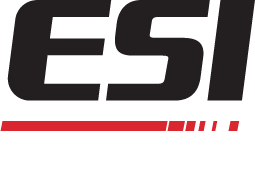Electron Beam Vs UV Energy Considerations
Electron Beam vs UV: Energy Considerations
When one considers the adoption of energy based curing technology, it's easy to deduce energy will be expended in the curing process. What's more crucial to consider, however, is how that plays against energy savings.
Both Electron Beam and UV technologies are effective at reducing costs—including those associated with operational inefficiencies such as high energy costs. And in recent years, ebeam technology has seen rapid adoption in food flexible packaging.
Since its arrival, electron beam printing has stepped out of the sidelines, where it served as a niche tool for a handful of users, and into the mainstream. Its environmental friendliness, effectiveness and ease of use have led to a quick adoption especially in food flexible packaging.
High Performance: Low Consumption
Traditional thermal methods cure by evaporating water or solvent based pigments, taking longer and using more resources than energybased curing methods. By their high energy consumption and production of greenhouse gases, most agree these older methods have no place for regular use in a conscientious, “clean” world. UV and EB technologies both address these issues effectively, however their methods differ. Depending on your targeted use, electron beam shows several advantages.
UV photons require photo initiators in the bonding process. Compare this to EB electrons, which, by naturally exceeding the bond energy of the curable materials, require no such additional element. This also plays into the integrity of the cured materials.
Many forms of packaging require special considerations to be acceptable for their intended use. Notable among these is food packaging. The fact that EB curing does not require an initiator positions it as a preferred method where food safety may be of concern. UV technology has made steps toward addressing its issues in this field, but has not yet reached a fully viable solution.
In an exploration of the level of penetration required for proper curing, one sees that not all bonds are effective for acrosstheboard use. As a measure of the energy required to produce results, EB electrons are known to be more energetic than UV photons (70,000 eV compared to 3.5 eV), and—unlike UV—EB will ionize all organic materials. Furthermore, EB provides superior penetration of materials, easily curing even thick, heavily pigmented, or filled inks and coatings. In this area, the UV process has shown measurable disadvantages.
Reliable Operations and Results
Clients expect consistency from their suppliers. In order to maintain a constant degree of quality, equipment must perform with the same measure of effectiveness. As UV lamps age, their spectral output degrades. Because short wavelengths degrade faster than long, uniformity across the spectrum suffers. It is likely to impact curing and results in additional maintenance as well as scrutiny of the end product.
EB output leans toward a reliable consistency, free of age-related change in performance or spectral variation. From a maintenance perspective, EB systems can run reliably up to eight times longer than UV, with normal preventative tuning required every 2,000 hours of operation. Even then, maintenance is generally minimal, requiring merely the changing of foils and filaments.
Ultimately, the intended use will play a large part in choosing between UV and EB technologies. For its huge versatility, reliability, and energy efficiency, though, the argument for converting to EB is a compelling one. Also, the continuing research into ways of further reducing costs of equipment and energy consumption, and the advantages of electron beam technology cannot be ignored. If you are ready to discuss how EB can help your business reduce costs and increase efficiencies, please feel free to contact us.


